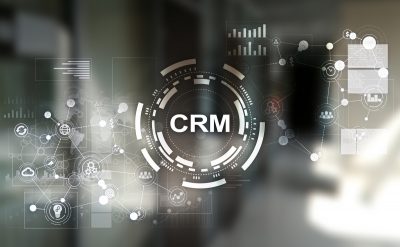Customer undeniably is the fuel that keeps a business running, and the team of happy customers is the one that builds the foundation for success. But how do you, as a business, make sure that your customers are happy and satisfied?
A research at the Wharton School conducted by Marketing Professor Patti Williams reveals that “evoking feelings of pride and awe are two ways that companies can forge deeper connections with their audiences.”
According to Salesforce research, it is understood that winning your customer’s trust is more vital than just caring about customer satisfaction. Because customers who trust are more likely to –
- Be Loyal (95%)
- Recommend the business to others (93%)
- Buy more frequently (91%)
- Spend more money (88%)
- Share experiences (86%)
On the contrary, when we talk about embracing new technology, the fear to accept it, and implement it as a part of the success journey is often considered a bet until you don’t evaluate thoroughly between a whole lot of success and failure stories to clear the air.
Players such as Salesforce, HubSpot, Oracle, Microsoft Dynamics, and more have proven the way CRM (customer relationship management) can impact a business.
Research conducted by industry giants such as Google indicates that customers are emotionally connected to a brand. Imagine, you want to buy a pair of running shoes, and the first name that probably hits your mind is a Nike or a Rebook.
Did you ever think why?
Well, this is the result of being emotionally connected to a brand. As per human rationale, we tend to choose a brand that is closer to our hearts.
There might be a series of reasons responsible for this. It could be a friend who gave a super awesome review about his/her pair of Nike or Rebook running shoes or the fact that the advertising strategy was such that it connected to you. Often, we feel that price is the primary element that affects the buying decision, but honestly, it is more about the connection between the brand and the customer.
As per research, the emotional connection between customers and the brand is approximately twice as likely to purchase a product or service and are about four times as likely to defend their purchase decisions. This should not be shocking as the driving force that keeps a business up and running is happy and invested customers.
Why CRM?
Operating a business is a challenge.
Businesses take a range of decisions that impact stakeholders almost every single day. These decisions range from selecting the most suitable software to deciding upon what company you plan to acquire next. In due course, decision-makers wear multiple hats, but managing customer relationships is a major priority as customers are the reason for their existence.
Customer management is critical to business success, and a customer relationship platform or CRM enables small, medium, or large organizations to automate and align every aspect of customer interaction.
CRM
CRM is a strategy that businesses invest in, to track customer relationships based on the buyer’s journey. Customer relationship management systems are used to store customer information and prospect interactions, collected from various marketing touchpoints such as emails, phones, live chat, websites, and social media. This information is later used to source essential insights to the client-facing employee with the right kind of information. Trust when CRM is used most effectively, it can redefine the sales team approach and keep productivity at the peak.
I think the quote by Kevin Stritz (Analytics Consultant, Wells Fargo) says it all.
“Every contact we have with a customer influences whether or not they’ll come back. We have to be great every time, or we’ll lose them.”
This is what makes CRM extremely essential for every business.
CRM pain points and solutions in detail
Every coin has two sides. Similarly, technologies, along with a set of pros, come with areas that are difficult to be addressed by a business. But trust when a business overcomes these factors, the pain points can be used as an exceptional set of arsenals by the business.
Decoding CRM pain points and solutions for improved business success
CRM software is a boon for business success when used appropriately. On the contrary, it can be an obstacle for the sales team if it is not leveraged in the most appropriate manner. Therefore, it is incredibly essential to pay close attention to resolving pain points related to CRM.
After an intense amount of research, we are here to highlight a few pain points that are often faced by businesses with a relevant set of recommendations to make your CRM journey profitable and error-free.
So, let’s get started.
1. Poor adoption rates
In several instances, the marketing and sales team disagrees upon setting common objectives before deploying the capabilities of a CRM system for the benefit of the organization.
As per a CSO Insights study, around 80% of B2B enterprises invest in CRM solutions, but only one third, roughly 33.33% of these organizations display 90% adoption rates. It is time to understand that companies spend a huge amount of capital for CRM, but sales professionals do not always appreciate it. The sales team believes that the system does not help them in generating the right amount of ROI.
The solution
In order to align the goodness of the CRM system with the workforce, it is necessary to assemble a cross-functional team to identify goals.
Once the objective is narrowed down, it is recommended to create smaller and actionable plans for about a quarter. Because only with well-curated plans, the organization can enjoy better results.
Caveat: Implementation may take a while, but with the implementation of the right tools and strategies, organizations can enjoy great success.
2. Integration
Introduction to a series of newer technologies is rapidly increasing the sales stack. Well, this is both good and bad (let me explain how).
As per a study by Accenture, about 59% of sales executives feel they are overwhelmed with too many technologies.
Approximately 55% of sales representatives hold sales stacks responsible for a negative impact on their performance.
On the other hand, sales reps are concerned about integrating solutions and automation platforms that support the prospect hunting process. This is possible when guesswork, research, and manual work is offloaded from the sales rep’s shoulders, where he or she can entirely focus on selling.
The solution
It is time to think out of the box and transform your CRM systems from a tool to a place that records and optimizes the prospecting environment for your sales representatives. Here businesses need to select CRMs on a priority basis to be integrated with the rest of the tools available in the rest of the sales technology stack.
Doing so will optimize sales productivity and streamline workflow.
3. Data quality
Your CRM engine reflects the quality of customers and information that is added to it. But businesses often overlook data issues, which actually is the backbone of any CRM system. Remember, data can have a direct impact on the bottom line of the business.
As highlighted in a recent report by Garter Inc., organizations have estimated that poor data quality hampered ROI by costing the company an average of USD 14.2 million annually.
Considering factors such as a change in the business location, hiring, and attrition of employees, data begins to become stale until the next person uses it, hoping not to get hold of unreachable contacts. But that is a myth.
The solution
Do not let anything build frustration and demotivate employees. To avoid any such shortcomings, it is recommended to research well under expert guidance and find a CRM solution that suits business needs.
Make sure the solution you choose has the right CRM tools and the caliber to protect your database and empower follow up data by making available correct, consistent, and complete information to cater to your needs.
Conclusion
To sum up, the importance and challenges faced by companies concerning the CRM system, it is time to check out how Wells Fargo used its CRM for the benefit of the business.
Wells Fargo, an American multinational financial services company headquartered in California, is responsible for monitoring about USD 1.9 trillion in assets and approximately 70 million customers. Titled as the seventh most profitable company in the US, Wells Fargo embarked on the CRM journey to maintain all its services such as banking, mortgages, investments, and credit cards, and more in sync. As a result, the company witnesses an impact that enables the smooth functioning of these departments and offers the following –
- Improved focus on high-value business as the bank is now able to save time spent on customer service
- Improved end-user productivity
- More attention for crucial projects as automated workflows, reliable and optimized platforms save time and energy
The result
With a dedicated approach toward the implementation and use of CRM, Wells Fargo has been able to save hundreds of non-productive IT and business hours. The automation system also has supported the bank to reduce technical debts and has built on systems that drive innovation and business growth.
Remember, as Bill Gates aptly said, “The first rule of any technology used in a business is that automation applied to an efficient operation will magnify the efficiency. The second is that automation applied to an inefficient operation will magnify the inefficiency.”












